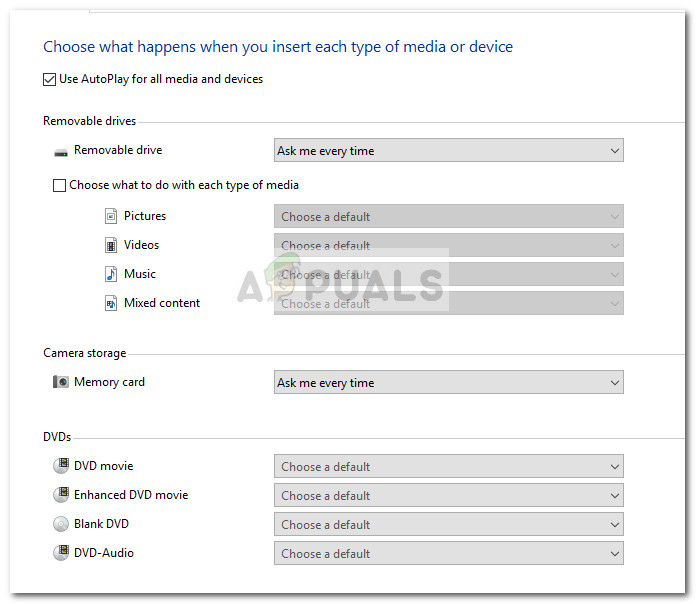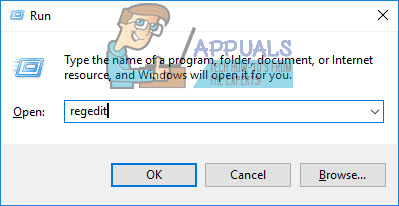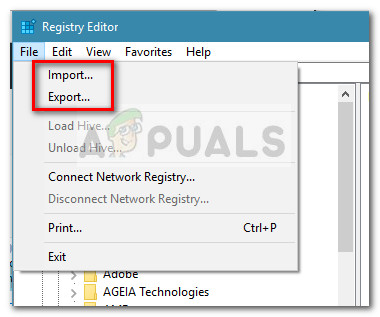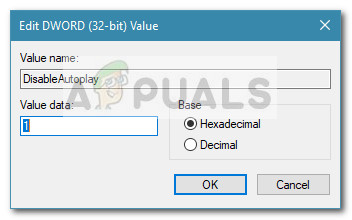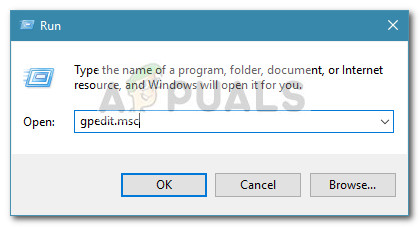You can use AutoPlay to set default behaviors for content types like music, videos, and photos but you can also set behaviors for media types like DVDs, cameras, and phones. AutoPlay eliminates the need to reselect preferences – for example, if you use AutoPlay to select an app that will automatically deal with your photos, you won’t have to make the same choice the next time this scenario repeats. However, security researchers have warned that setting AutoPlay behaviors that are too loose might leave your system exposed to vulnerabilities. Because of this, it’s important to know that you always have the option to disable the AutoPlay function and make the choices manually whenever the need arises.
Aditional Considerations
AutoPlay notifications will only be displayed if AutoPlay is turned on and you connect a device, media or another type of content that has been previously established as default (by choosing Choose a default or Ask me every time).It’s possible to turn off AutoPlay for specific media by choosing to Take no action as the default.AutoPlay only knows how to show non-storage devices (phones, digital cameras, etc.). This means that AutoPlay won’t manage USB flash drives and other external drives.You can force the opening of an AutoPlay notification by pressing and holding the Shift key while you plug in or insert media into your PC.
If you’re looking for a way to disable or enable AutoPlay on Windows 10, the methods in this article will help. Below you have a collection of methods that other users in a similar situation have used to either disable or enable AutoPlay on Windows 10. Keep in mind that each method will help you accomplish the same thing, so feel free to follow whichever method seems more convenable to your particular situation.
Method 1: Turning AutoPlay On or Off via the Settings Menu
The easiest way to either enable or disable AutoPlay is via the Windows 10 Settings menu. Keep in mind that following the steps below will override any AutoPlay preferences that you might have set previously. Note: If you want to enable this Autoplay, you should stick to this method since it will enable you to also choose AutoPlay defaults without actually plugging different types of content. Here’s a quick guide on how to disable and enable AutoPlay via the Windows 10 Settings menu:
Method 2: Disabling or Enabling AutoPlay via Control Panel
Another way to disable or enable AutoPlay is via a Control Panel menu. If you’re looking for a method that will enable Autoplay and allow you to do a fair ammount of customization to the default behavior, this method is without a doubt your best choice. Here’s a quick guide on how to turn AutoPlay On or Off using Control Panel:
Method 3: Disabling or enabling AutoPlay using Registry Editor
If you’re looking for the most technical approach, definitely go for this Registry Editor hack that will enable to disable or enable AutoPlay. But keep in mind that this method is the equivalent of a basic ON and OFF switch, which means you won’t be able to configure the default behavior or reset it. Here’s a quick guide on how to enable or disable Autoplay via Registry Editor: Warning: Keep in mind that operating other changes via Registry Editor might affect the overall health of your PC. In order to avoid any unpleasantries, make sure that you follow step 2 where we backup the registry in order to ensure a fail-safe method.
Method 4: Disabling or Enabling AutoPlay via Local Group Policy Editor (if applicable)
Another way to turn AutoPlay On or Off is via the Local Policy Editor. But keep in mind that Local Group Policy Editor is only available in Windows 10 Pro, Windows 10 Enterprise, and Windows 10 Education versions. This method is to be preferred if you’re trying to enforce a rule that will apply to all users that are using the machine. If this method is applicable, follow the steps below to either enable or disable AutoPlay by using the Local Group Policy Editor:
How to Disable Video/Audio Autoplay in Chrome, Firefox, and Microsoft Edge?FIX: AutoPlay Not Working on Windows 10Fix: YouTube AutoPlay not WorkingHow to Autoplay Embedded YouTube Videos on your page




